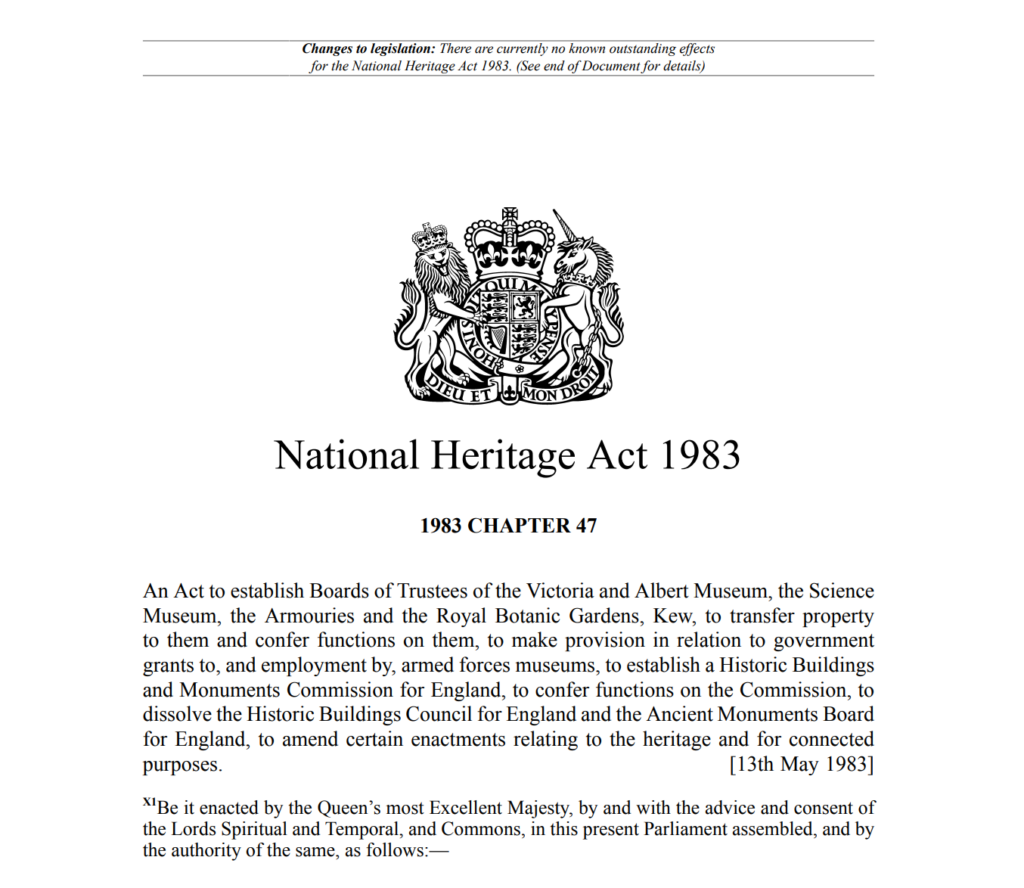This spring marks the 40th anniversary of the statutory powers to compile a ‘register of gardens and other land … appearing to them to be of special historic interest’ (National Heritage Act 1983, Schedule 4 Section 8C) with the first registrations being published a year later in 1984.
The next 12 months offer a great opportunity for all of us to celebrate the Register and its development over 40 years. It’s also timely to think about the next steps in the protection of our nation’s designed landscape heritage. After all our own fortieth birthdays are often treated as signifying maturity and a new phase so why not for the Register too?
Shaped by Michael Hesletine, Secretary State for the Environment (1979-1983), the 1983 Act paved the way for the modernisation of the State’s heritage responsibilities. It established key museums such as the V&A and Royal Botanic Gardens Kew as independent public bodies with boards of trustees, and a new Historic Buildings and Historic Monuments Commission which formally came into being on 1 October that same year. The Commission’s first chairman, Lord Montagu of Beaulieu named it ‘English Heritage’. The new non-departmental government body took on the roles of several Government offices, ministries and advisory boards to look after properties in the care of the State and designations. The Act defined these duties as:
- securing the preservation of ancient monuments and historic buildings
- promoting the preservation and enhancement of the character and appearance of conservation areas
- promoting the public’s enjoyment of, and advance their knowledge of, ancient monuments and historic buildings and their preservation.
In order to fulfil these functions, the Act also conferred relevant powers to the new body such as property acquisitions (including gardens), grant-making, publishing, surveys and other operational requirements such as power of entry, governance, staffing, finance and accounting. Between 1900 and 1950 the State had amassed hundreds of buildings, monuments and sites amassed as a national collection. English Heritage continued to add to this collection from 1983 to 2015 and grew a sizeable membership and income which contributed to the costs of maintaining and conserving the properties. Under Lord Montagu and later Jocelyn Stevens, acquisitions included gardens such as Brodsworth Hall (South Yorkshire) and its restoration. In 2015 the organisation was divided into the charitable English Heritage Trust and the public advisory body, Historic England (the Historic Buildings and Monuments Commission). (The Royal Commission on the Historical Monuments of England (set up in 1902) and the National Monuments Record had been merged with English Heritage back in 1999 and continue to part of Historic England’s responsibilities).
The powers to compile a register of gardens stands out as the one new specific task for the new Commission. Protection for buildings and ancient monuments of national importance was already well established by the 1980s. Indeed, the history monuments protection goes back to an 1882 Act and the current listed building system has its roots in the 1947 Town and Country Planning Acts. The protection of historic wrecks had already been covered by a 1973 Act and further measures were added to the 1983 Act.
The need to protect our parks and gardens heritage had been widely recognised, including in Parliamentary discussions, for several decades ahead of the 1983 Act. There are two Gardens, Heritage & Planning blogs [https://gardensheritageandplanning.com/] that provide more detail on the evolution of the legislation. The Gardens Trust, as the former Garden History Society, the ICOMOS-UK Historic Gardens Committee and experts such as John Pendlebury had been championing statutory protection and how this might work, and there were lists of candidate sites.
During the 1983 Act’s passage through Parliament, there was debate about the scope of interests that might be captured in a new national list such as architectural, historic, artistic, silvicultural and horticultural. However, the Government was generally reticent about increasing the number of designations and more lines on maps; and they had concerns about the capacity of English Heritage to take on the task. It was only in the last committee stage of the Act, that the power to compile a register was added however its purpose was focused down to historic interest.
The register was pioneering as a statutory measure as follows on smartly from the 1982 ICOMOS Florence Charter which highlighted the importance of identification and listing to ensure protection. The English register was pioneering as a statutory measure. It was the first in the UK and a leader across Europe and further afield.
The first English registrations were published as county volumes. As knowledge and interest in the care, conservation and value of historic parks and gardens grew, and the demands of the planning system increased, English Heritage invested in a programme of work to upgrade the register entries between 1999 and 2003. Thematic studies were also commissioned from experts to guide the development of the register and most recently the Gardens Trust and members helped identify important post-1945 designs with 20 new registrations listed in 2020. In 2016 all the register entries and maps became available online as part of the National Heritage List for England. There are currently 1,701 registered sites. The newest registration is East Dene on the Isle of Wight, an 1820s villa pleasure ground.
Over the next year, it would be great to explore the story of the register over the last 40 years and how registration has worked in practice and possible next steps in the protection of historic parks and gardens.
Jenifer White
Former Principle National Landscapes Advisor, Historic England
First published in GT News, Issue 22, Summer 2023.
Find out more about our celebration of the 40th anniversary of the Heritage Act here.




